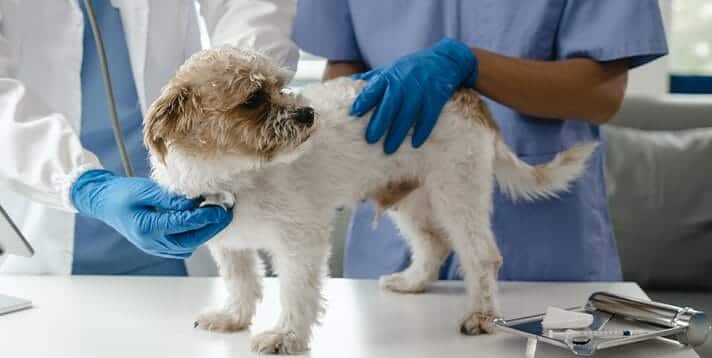If you’ve recently discovered that your beloved pup is pregnant, congratulations! This beautiful time in a dog’s life can be exciting and memorable for you and your pet. While it’s a beautiful experience, it can also come with some questions.
One of the most common questions new pet parents may have is whether their pregnant dog will experience morning sickness. Let’s take a closer look at morning sickness in dogs.
What Is Morning Sickness?
Morning sickness is caused by the same hormones responsible for the fetus’s growth. These hormones cause changes in the body, leading to nausea and vomiting.
In humans, this is often referred to as “morning sickness” because it usually occurs during the early stages of pregnancy; however, in dogs, this type of nausea and vomiting can occur at any time during the pregnancy or even after birth.
Signs Of Morning Sickness In Dogs
Some signs that your pup may be experiencing morning sickness include decreased appetite, loss of energy, and sometimes vomiting or retching. However, it is essential to note that these symptoms can also indicate other issues, such as infections or parasites.
If you notice any change in your dog’s behavior or appetite, it’s always best to consult your vet as soon as possible.
Treating Morning Sickness In Dogs
If your vet determines that your pregnant pup is suffering from morning sickness, they will likely recommend an anti-nausea medication to help ease her symptoms while she goes through this process.
Additionally, they may suggest switching her diet to something more easily digestible, like boiled chicken and rice or canned food that contains probiotics, which can help with digestion and reduce stomach upset. It is also essential to ensure she has plenty of fresh water available throughout her pregnancy to stay hydrated and healthy!
Preventive Measures for Morning Sickness in Dogs
Feeding your pregnant dog smaller, more frequent meals can help prevent or mitigate morning sickness. This approach eases digestion and keeps her stomach from becoming too full or empty, which can trigger nausea. Additionally, ensure her diet is balanced and gentle on the stomach. Avoiding sudden dietary changes during pregnancy is also advisable, as this can upset her digestive system.
Duration and Frequency of Morning Sickness in Dogs
Morning sickness in dogs usually occurs in the early stages of pregnancy and might last for a few days to a couple of weeks. The frequency of nausea or vomiting episodes varies with each dog. Some may experience it only once or twice, while others have more frequent bouts. Monitoring your dog’s condition is essential to ensure her symptoms are not escalating.
When to Seek Emergency Care
Seek immediate veterinary care if your dog exhibits signs of excessive vomiting or dehydration (such as dry gums or lethargy) or refuses to eat for more than 24 hours. Other alarming symptoms include extreme lethargy, diarrhea, or any signs of pain and distress. These could indicate a more severe condition requiring urgent medical attention.
Post-Birth Considerations
After giving birth, continue monitoring your dog for any lingering effects of morning sickness. Ensure she gradually returns to her regular diet and maintains adequate hydration, especially if nursing. Consult your vet if she shows signs of ongoing nausea or poor appetite post-delivery, as these could affect her ability to care for her puppies.
Conclusion
The journey into motherhood can be beautiful – but understanding what physical changes your pup might go through along the way is critical! Knowing how to spot signs of morning sickness and when and how to treat them will help ensure a safe and comfortable experience for you and your furry friend throughout her pregnancy journey.
With proper care and attention from both you and your vet, there’s no doubt that you two will have a wonderful time together!











